Paris Restaurant War? Hold My Foie Gras
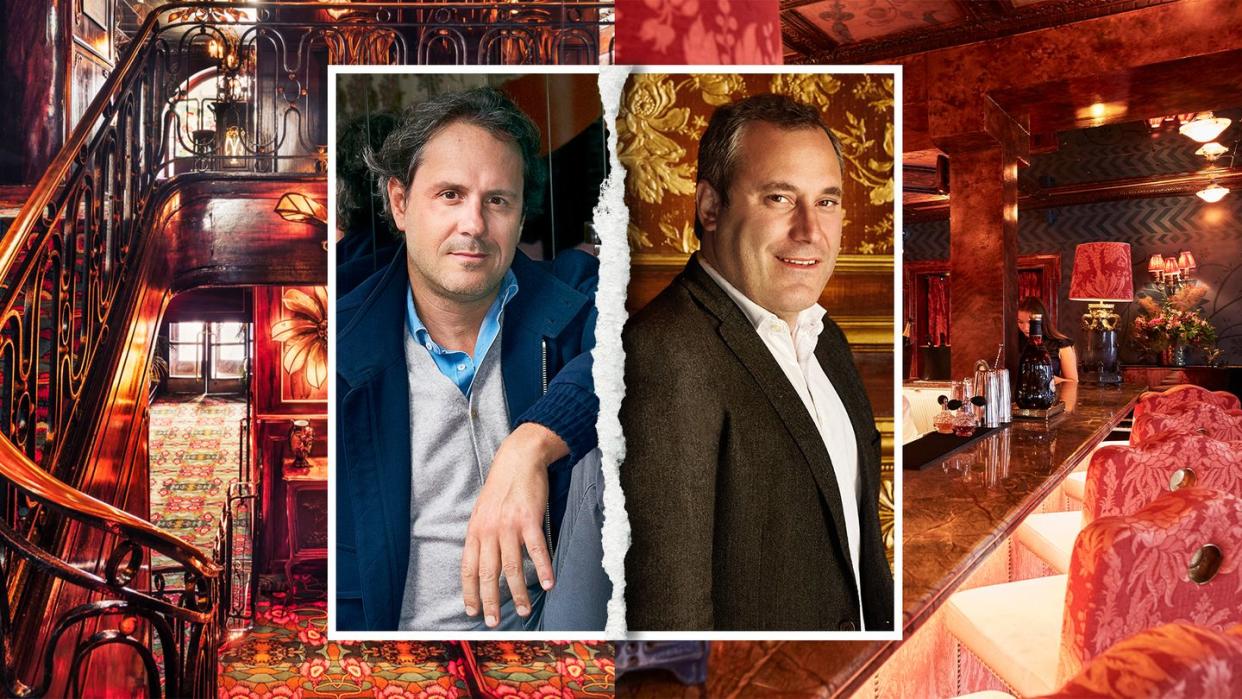
On any given evening this spring in Paris’s 8th Arrondissement, you could walk around the corner from the Hôtel de Crillon and behold something many thought they would never see again. Maxim’s, the famed bistro that debuted in 1893 and hosted generations of boldface names, had its lights on and was very much open for business. A peek in the windows of this icon of Art Nouveau opulence, which was reborn last December after lying dormant for years, would reveal a room full of Parisian bankers and fashion executives, the type of crowd that is at home in a place where the filet is 103 euros and no one really cares who’s in the kitchen preparing it.
A resurrection of this magnitude would cause astonishment in most cities, but in Paris it has barely raised an eyebrow. Indeed, some of the assembled at Maxim’s were probably just happy that they no longer needed to trek to Lapérouse (the 258-year-old restaurant in the 6th, which had its miraculous reopening in 2019) whenever they craved a dose of historic bling with a side of bourgeois comfort food.
A first-timer visiting Maxim’s and Lapérouse might think they were owned by the same company—one that seems to own a host of other business-casual restaurants, polished nightclubs, and already-reserved alfresco tables with the best views in Paris. In fact, Maxim’s is operated by Laurent de Gourcuff, Lapérouse by Benjamin Patou. Both 47 years old and born only months apart, the former friends got their start in the nightlife scene in the 1990s and went on to build competing multimillion-dollar hospitality empires the likes of which Paris, a town where gastronomy has always been culture and the chef has always mattered, had never seen before. Now, while the increasingly food-focused tourists of the world scour every blog in search of the next revelatory meal, upmarket Parisians keep giving Gourcuff and Patou reasons to expand.

That both men feed such a specific audience may explain why the recent explosive developments in their decades-long competition have remained a mostly local story. In February, Le Monde was the first to break the news that Gourcuff had been convicted of “active corruption” and “influence peddling” by the Paris Criminal Court. It only happened, Gourcuff claimed on a recent French podcast, because Patou couldn’t handle losing another big government contract to his old pal.
It all started in 2018 when France Galop, the country’s governing body for horse racing, awarded to Gourcuff’s company, Paris Society, a 12-year concession contract to conceptualize and operate the restaurants and event spaces at the Paris-Longchamp racetrack. Located in the Bois de Boulogne, the historic thoroughbred course had just been completely reimagined by architect Dominique Perrault. It’s the kind of highly coveted contract that Patou and Gourcuff are used to competing for.
The men, after all, have been in the same lane since before they were born. Patou, the grandnephew of couturier Jean Patou, is a lifelong resident of Neuilly-sur-Seine, Paris’s wealthiest suburb. So is Gourcuff, who was born into a noble family from Brittany. The former is stocky, with close-cropped salt-and-pepper hair. The latter is tall, with a boyish mien and a body built for polo. Neither seems to need the top two buttons of the dress shirt he tucks into his jeans before throwing on a sport coat.
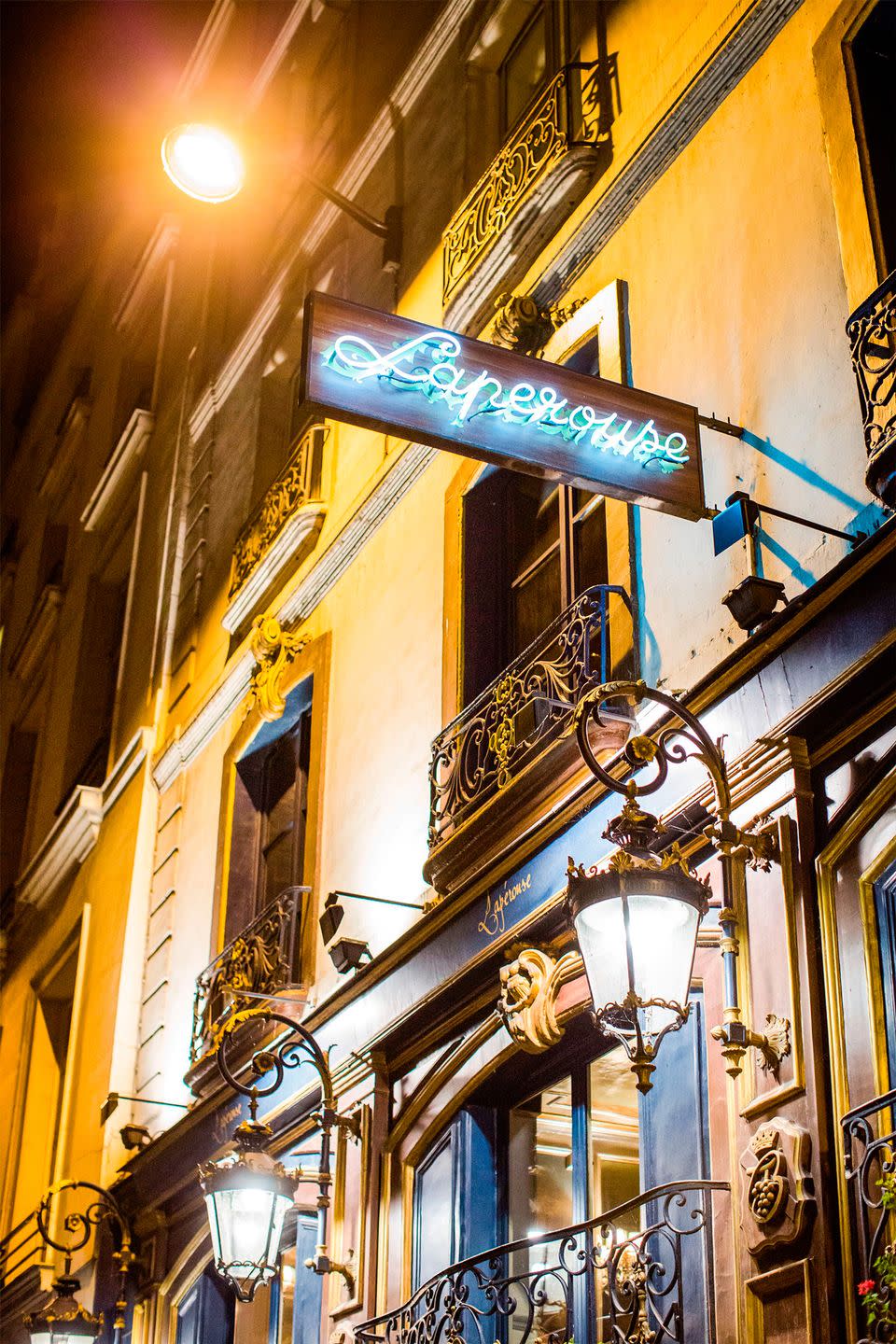
The understated choice of dress belies a famously intense drive to not just compete but bury. The men are given to regularly discussing their latest revenue milestones and global restaurant tallies publicly, always careful to point out that you ain’t seen nothing yet. Gourcuff, a teetotaler, says in interviews that he lets down his guard only at the family country house.
Patou also prizes vigilance. Suspecting foul play during the Longchamp bidding process, he allegedly complained to the authorities after seeing a page from his rival’s private schedule. On it was the name of France Galop’s marketing director with the number 50 scribbled next to it. Patou took this to be shorthand for a 50,000 euro bribe. In 2018, less than a week before Christmas, the police raided Gourcuff’s home at dawn and publicly announced that he and his company were under investigation.
But then, a year later, Patou withdrew his complaint. According to multiple reports, this surprising turn of events happened after he met with Gourcuff, who explained that the agenda item in question regarded the marketing director’s 50th birthday party, which he had been invited to, and not a bribe. According to Gourcuff, the men signed a nondisparagement agreement and went back to tending their empires.
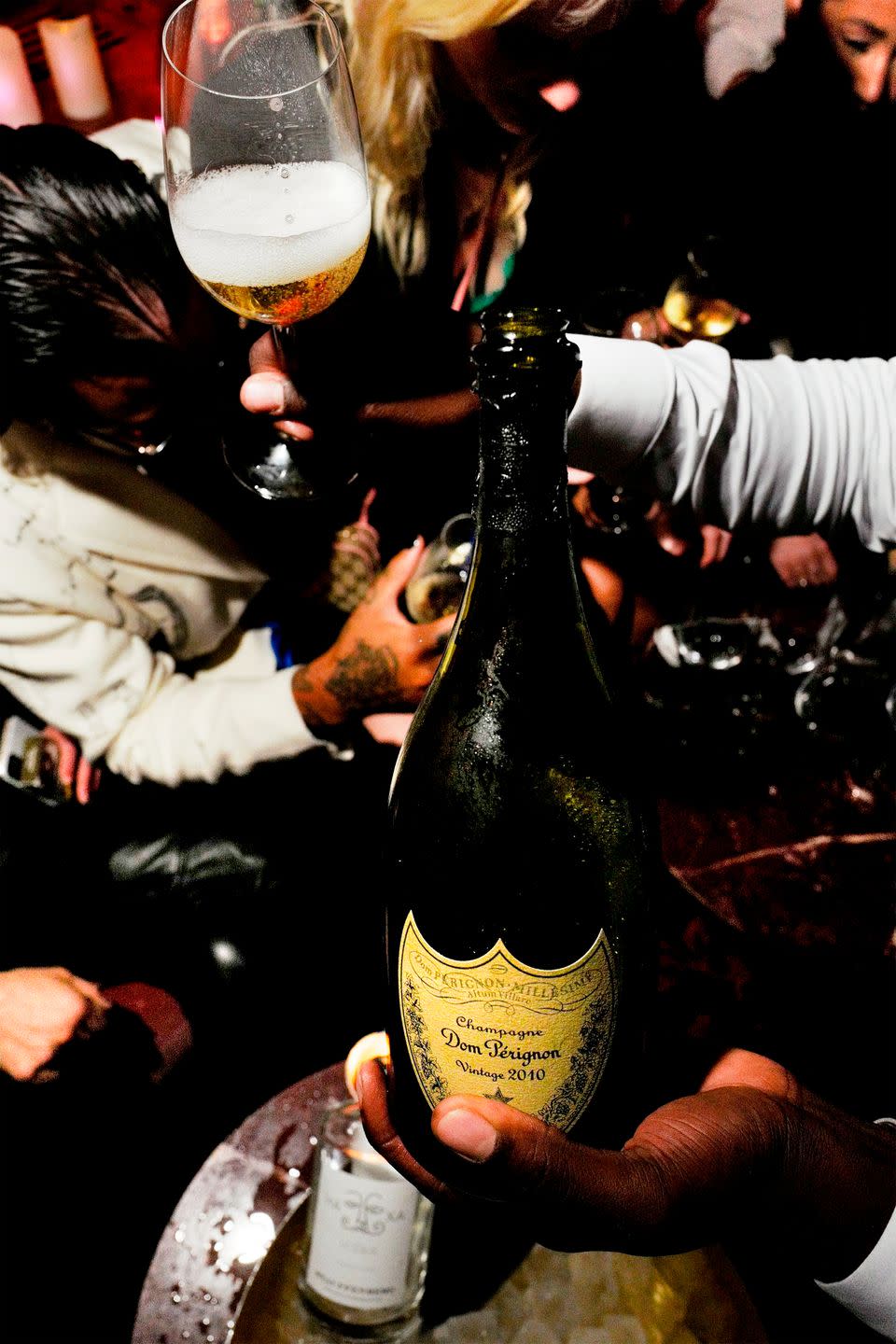
The prosecutor, however, kept at it.
The acrimonious details of the Longchamp affair can obscure the fact that Gourcuff and Patou transformed Paris’s social life by asserting that the restaurateur could be the star, and by making their restaurants feel more like nightclubs and their nightclubs feel more like restaurants.
In America the festive table trend had kicked off many years before the rise of these two French entrepreneurs, thanks to Ian Schrager, André Balazs, and other hospitality multihyphenates who made their names by combining revelry, food, and extremely tough door policies under the same roof.
Gourcuff started his career at 22, with nightclubs like Les Planches and Chez Régine. Restaurants weren’t on his horizon until 2013 (which, coincidentally, was just a year before Patou decided to open his first restaurant). One day, the story goes, Gourcuff was checking out a potential club space at the Palais de Tokyo with Jean de Loisy, the museum’s director. During the tour of the buildout, Loisy casually pointed to another room at the venue and explained that it would be the site of a restaurant. In the press Gourcuff has said that something compelled him to take a look. He was impressed by the high ceilings and the views of the Seine, and he suddenly thought, Why not me? In the business plan he drew up with his partner Gilles Malafosse, he forecast sales of 4 million euros in year one. Monsieur Bleu, which is what Gourcuff wound up calling that restaurant, reportedly made 10 million.

“There are fewer than 20 restaurants with results like this in Paris,” Gourcuff recently told a French journalist when explaining how the success of his debut restaurant had changed the course of his career. “After that I got it into my head to create 10 or 15 brands of great restaurants.” The Paris Society website currently boasts a portfolio of more than 70 businesses, including nightlife venues, luxury hotels, and restaurants ranging from the revivals of legendary destinations like Apicius (as well as Maxim’s) to see-and-be-seen spots in the vein of Monsieur Bleu and Girafe.
Patou, for his part, has distinguished himself from Gourcuff to some degree by collaborating with respected chefs like Marc Veyrat and Jean-François Piège; establishing a larger footprint in St.-Tropez than Paris Society’s; and building a reputation for having on speed dial power players in the worlds of politics, art, and business, including Nicolas Sarkozy and LVMH scion Antoine Arnault. Singer-songwriter Patrick Bruel is an investor in Patou’s company, Moma Group, and everybody from actor Christopher Lambert to philosopher Bernard-Henri Lévy attended the brand’s 10th anniversary blowout in 2022.
Ultimately, though, the differences between Gourcuff’s and Patou’s ambitions and output are subtle. “They have a similar formula,” says Paris-based writer and social fixture Emilien Crespo. “You get your hands on a space with a great or historic location—let’s say, a terrace with a view of something like the Eiffel Tower—and then you hire a very expensive designer like Joseph Dirand to make it Instagram-friendly. But the most important part of your mission is to make rich people from the 8th and 16th feel comfortable. With a few exceptions, it’s super-predictable at these places. Never bad, never life-changing, and always, always overpriced.”
Crespo adds, “No matter what you think of their places, you have to acknowledge how insanely well their businesses tend to run, and the fact that they each have a reputation for outperforming revenue targets. That is why every public space is dreaming to have them operate in their venues.”
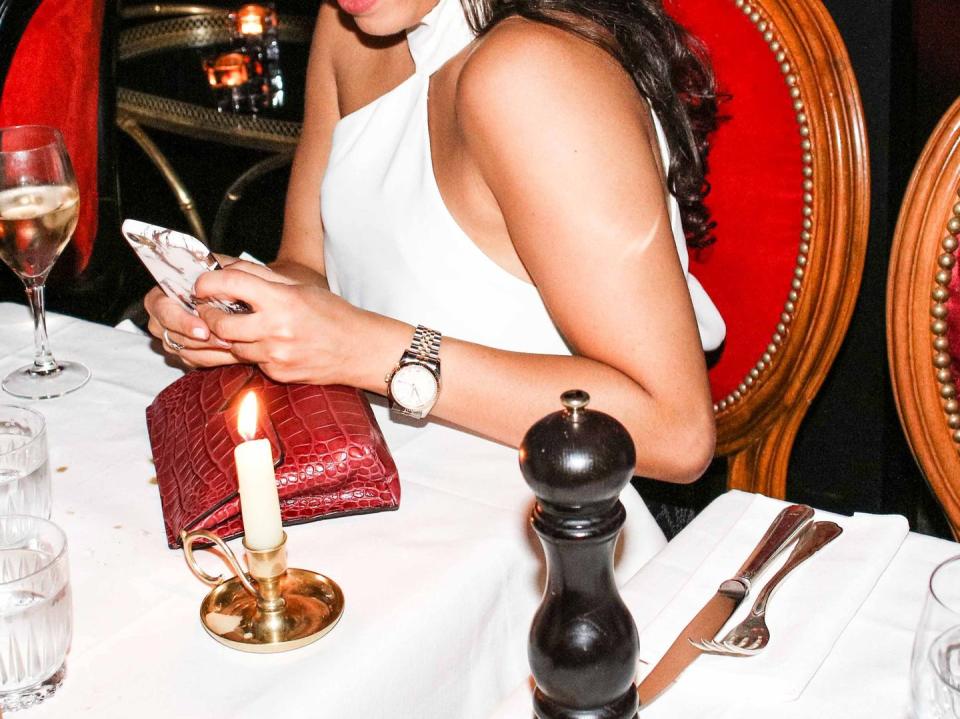
Over the past five years Paris Society and Moma Group have been in a race to see who can partner with the most powerful backer. Multinational hotel giant Accor, which owned 38 percent of Paris Society’s stock, bought the remaining stock outright in December 2022, with Gourcuff staying on as president, while French entrepreneur Walter Butler purchased 35 percent of Moma Group last year. Accor reportedly paid an estimated 300 million euros to obtain Paris Society, and the partnership has already increased the company’s global footprint and led to five new restaurant openings since the beginning of 2024. For Patou, working with Butler, whose investment group owns the storied three-Michelin-starred l’Ambroisie, puts him in a position to strengthen his roster of legacy titles like Lapérouse, which Moma Group recently expanded to London in partnership with Arnault and LVMH.
During all this empire building, however, Gourcuff was under close surveillance by the authorities. In 2022 the public prosecutor charged that Gourcuff had, in fact, extended an illegal gift to the France Galop marketing director for his 50th birthday: dinner for nine at one of his restaurants. (Gourcuff didn’t deny the accusation. In court he stood behind his decision and cried foul.) Additionally, the prosecutor claimed that Gourcuff gained inside information during several dinner parties that he hosted for the executive during the bidding process. The court found Gourcuff guilty and issued a suspended two-year prison sentence and fined his company 800,000 euros. Gourcuff’s lawyers say they are appealing the convictions. As of this writing, Patou still has a smaller portfolio—36 businesses—and it’s too early to tell if he’ll ever match Gourcuff’s ability to win bids like Longchamp. As Le Figaro bluntly noted in 2017, “Gourcuff wins them all, like a steamroller.”
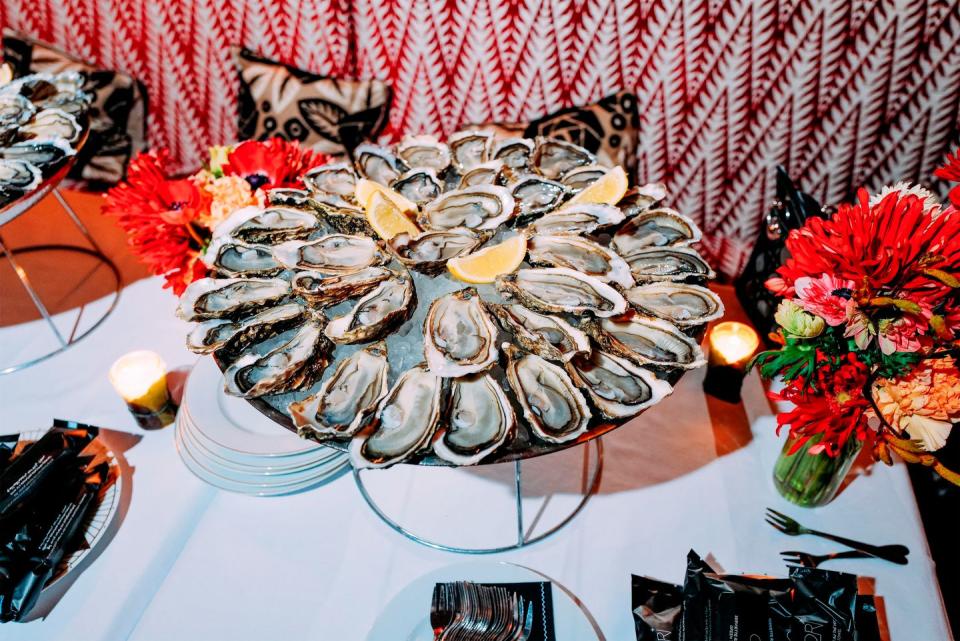
“If it had been the marketing director’s 49th birthday and 49 was the number in the margins, I am certain that none of this would have happened,” Gourcuff said in a recent podcast interview. “I’ve acknowledged fully and without hesitation that I comped a meal at my restaurant for an employee of France Galop—after winning the bid.” Anyone would have done the exact same thing, he went on. “The difference is that it would never occur to me to issue a formal complaint about something so normal.”
Has the legal fracas slowed the daily parade of Eiffel Tower terrasse selfies at Girafe? Going into an Olympic summer, the place has never been busier.
Gourcuff’s Greatest Hits
• Raspoutine One of Gourcuff’s major nightclub successes, this revival of the ’60s cabaret club designed by the artist Erté featured Benjamin Patou as Gourcuff’s partner until 2015. The brand has since expanded to L.A. and Dubai. •Girafe Interiors by Joseph Dirand, a terrace with one of the best views of the Eiffel Tower in all of Paris, and a menu of celebratory seafood towers keep Girafe perennially packed, six years after its debut. •Coco This restaurant in the Palais Garnier reportedly receives upward of 4,000 requests for a table every day. Insiders recommend staying at a top hotel with a good concierge to get to the front of the line. •Abbaye des Vaux-de-Cernay In 2023 Gourcuff unveiled Paris Society’s reimagining of a Cistercian abbey south of Paris as a luxe hotel, realizing his longtime dream of creating the equivalent of England’s Soho Farmhouse. •Maxim’s The symbol of Art Nouveau excess, where Jean Cocteau spent many a long night and where Vincente Minnelli filmed multiple scenes for the film Gigi, was brought back from the dead by Gourcuff in 2023.
Patou’s Prime Spots
• L’Arc The club that put Patou on the map is this decidedly buzzing venue steps from the Arc de Triomphe. Leonardo DiCaprio was spotted partying there in December. •Le Boeuf sur le Toit To bring back the Art Deco cabaret-restaurant once frequented by Jean Cocteau, Diaghilev, and Maurice Chevalier, Patou tapped Alexis Mabille to redesign the space. •Lapérouse Patou’s first venture in partnership with Antoine Arnault and LVMH, this revival of the 18th-century restaurant opened in 2019. Arnault and Patou have since launched casual spin-offs under the Café Lapérouse mantle. •Casa Amor The bottle service and untz-untz continue to be in full effect at the beach club and self-described Tulum of St.-Tropez opened by Patou in 2021. Moma Group has announced plans to expand the concept globally with new partner Walter Butler. •Mimosa In 2021 Patou enlisted the acclaimed chef Jean-François Piège to give some Michelin bona fides to this Mediterranean restaurant at the Hôtel de la Marine just off Concorde.
This story appears in the Summer 2024 issue of Town & Country. SUBSCRIBE NOW
You Might Also Like


